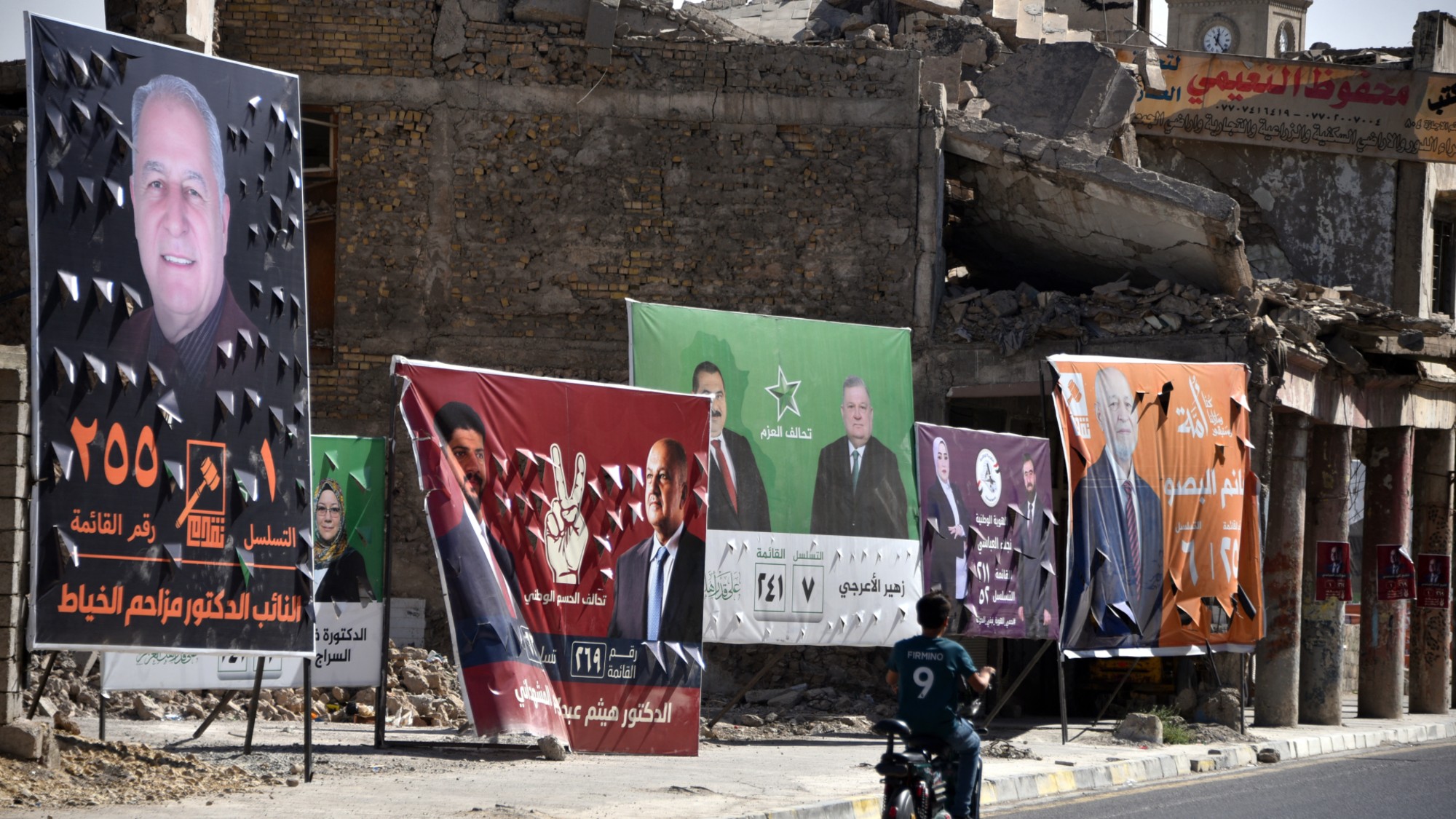What happened to Nika Shakarami?
The schoolgirl was found dead more than a week after disappearing during Iran’s ongoing protests

The death of an Iranian teenager who disappeared while taking part in protests over the killing of another young woman has further stoked tensions in the country.
Nika Shakarami was “found dead in a morgue housed in a detention centre” by her family last week, just days before what would have been her 17th birthday, reported BBC Persian. Nika had been missing for ten days after attending one of the anti-government protests that have erupted following the death of 22-year-old Mahsa Amini while in police custody.
The unrest has spread to “dozens of cities” nationwide despite “government efforts to clamp down” on the protesters, said ITV News, and is “the most widespread challenge to Iran’s leadership in years”.
The Week
Escape your echo chamber. Get the facts behind the news, plus analysis from multiple perspectives.

Sign up for The Week's Free Newsletters
From our morning news briefing to a weekly Good News Newsletter, get the best of The Week delivered directly to your inbox.
From our morning news briefing to a weekly Good News Newsletter, get the best of The Week delivered directly to your inbox.
How did Nika die?
The teenager was last seen alive by her family on 20 September, when she left her home in Tehran at around 5pm local time to attend a protest against Islamic laws that disproportionately inhibit the freedom of women.
The unrest erupted three weeks ago after ethnic Kurish woman Amini was arrested by the so-called morality police during a trip to the capital, for allegedly breaking the country’s strict female dress regulations. Amini’s cousin told Sky News that she died as a result of blows to the head after being “tortured and insulted”.
Nika’s family have also accused the authorities of murder. The teenager was last heard from during a phone call with a friend, when Nika said that she was “running away from security agents”, The Sun reported.
“That night her Telegram and Instagram accounts were deleted and her mobile phone went dead,” the paper continued. Her family “spent the next ten days searching for her in prisons, hospitals and even the mortuary”, before being told that “a girl matching her description was in the Kahrizak morgue”, located in a local detention centre.
A free daily email with the biggest news stories of the day – and the best features from TheWeek.com
Nika’s aunt, Atash Shakarami, told the BBC that the authorities “didn’t allow us to see her body, only her face for a few seconds”. According to reports, her skull had been fractured and her nose was broken.
After recovering her body, Nika’s family had planned to bury her on Monday, but “her body was snatched” by security forces and “buried in a village about 40km (25 miles) away”, the BBC reported.
Amid growing anger over the alleged killing and secret burial, the schoolgirl “has become an icon for the anti-government movement”, said The Guardian. The outcry has prompt an official investigation, with Iranian media reporting on Tuesday that the security forces had arrested eight people in connection with her death.
The authorities have denied having any involvement and “the official cause of death was given as a fall from a height”, The Sun reported.
Iran’s judiciary have also “rejected any connection” between the death and the ongoing protests, reported France 24.
An autopsy had found “multiple fractures... in the pelvis, head, upper and lower limbs, arms and legs which indicate that the person was thrown from a height”, Tehran judiciary official Mohammad Shahriari reportedly told state media. He added: “The incident has nothing to do with the recent disturbances.”
Human rights groups have accused the government of responding to the protests with “a bloody crackdown in which dozens of people have been killed and hundreds more injured”, said The Guardian.
What next?
The authorities have “intensified efforts to stamp out the protests as they spread around the country and across ethnic and class divides”, said The Guardian.
For years, Iran’s clerical government has “stamped out dissent with arbitrary detentions and even mass executions”, said CNN. But in spite of “the government’s decades-old intimidation tactics”, the protestors remain “defiant”.
Students who gathered outside Mashhad University this week chanted: “This is not a protest anymore. This is the start of a revolution.”
Not everyone is so hopeful. The Iranian authorities had been “caught off balance”, said The Guardian’s diplomatic editor Patrick Wintour, but “if the past is a tutor, it is easy to write the obituary of this round of protests”.
-
 Pipe bombs: The end of a conspiracy theory?
Pipe bombs: The end of a conspiracy theory?Feature Despite Bongino and Bondi’s attempt at truth-telling, the MAGAverse is still convinced the Deep State is responsible
-
 The robot revolution
The robot revolutionFeature Advances in tech and AI are producing android machine workers. What will that mean for humans?
-
 Health: Will Kennedy dismantle U.S. immunization policy?
Health: Will Kennedy dismantle U.S. immunization policy?Feature ‘America’s vaccine playbook is being rewritten by people who don’t believe in them’
-
 How Bulgaria’s government fell amid mass protests
How Bulgaria’s government fell amid mass protestsThe Explainer The country’s prime minister resigned as part of the fallout
-
 Femicide: Italy’s newest crime
Femicide: Italy’s newest crimeThe Explainer Landmark law to criminalise murder of a woman as an ‘act of hatred’ or ‘subjugation’ but critics say Italy is still deeply patriarchal
-
 Brazil’s Bolsonaro behind bars after appeals run out
Brazil’s Bolsonaro behind bars after appeals run outSpeed Read He will serve 27 years in prison
-
 Americans traveling abroad face renewed criticism in the Trump era
Americans traveling abroad face renewed criticism in the Trump eraThe Explainer Some of Trump’s behavior has Americans being questioned
-
 Why these Iraqi elections are so important
Why these Iraqi elections are so importantThe Explainer The US and Israel are increasingly pressuring Baghdad to tackle Iran-backed militants, while weakened Iran sees Iraq as a vital remaining ally
-
 Nigeria confused by Trump invasion threat
Nigeria confused by Trump invasion threatSpeed Read Trump has claimed the country is persecuting Christians
-
 Sanae Takaichi: Japan’s Iron Lady set to be the country’s first woman prime minister
Sanae Takaichi: Japan’s Iron Lady set to be the country’s first woman prime ministerIn the Spotlight Takaichi is a member of Japan’s conservative, nationalist Liberal Democratic Party
-
 Russia is ‘helping China’ prepare for an invasion of Taiwan
Russia is ‘helping China’ prepare for an invasion of TaiwanIn the Spotlight Russia is reportedly allowing China access to military training